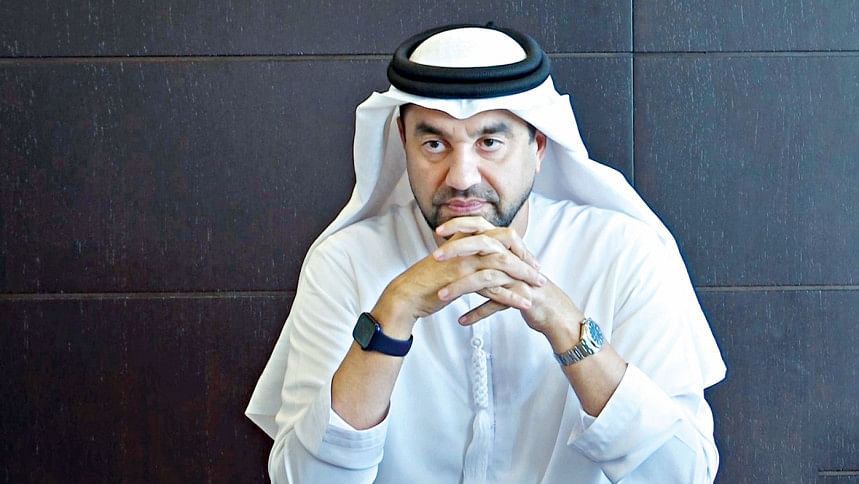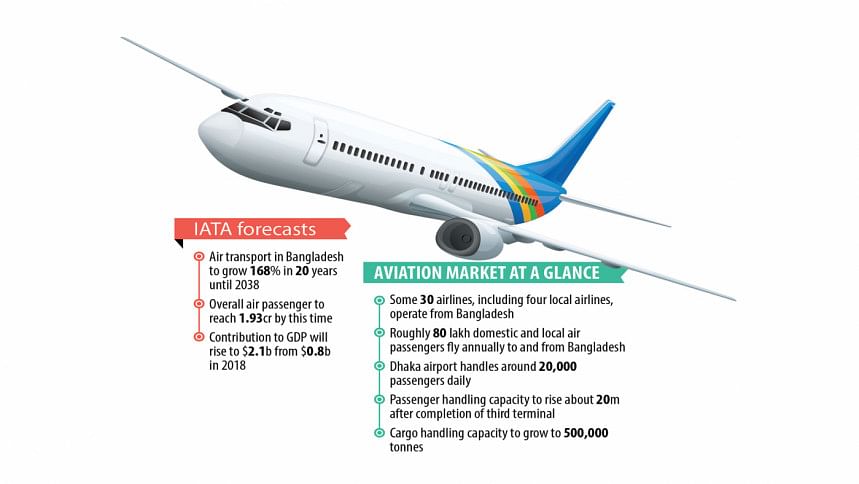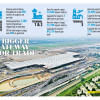Open sky policy a must for Dhaka airport to be a regional hub

Bangladesh should make proper investment and adopt an open sky policy to build a sophisticated airport in Dhaka and turn it into a regional aviation hub, said Ahmed Hashim Khoori, senior vice president of Emirates for West Asia and Indian Ocean.
Bangladesh will have to copy what Dubai has done to become a world-class airport, he said.
It is not possible to be a regional hub by adding restrictions on flights to different routes, he said at a media briefing at the Emirates headquarters in Dubai.
In a recent interview, Khoori shed light on the operations of the airline, its flight training academy and SkyCargo facilities.
"Bangladesh will have to have a very strong network between the east and the west and Biman Bangladesh Airline will have to be more active here," he said.
The government in Dubai has spent billions of dollars on infrastructure and Dubai has always maintained an open sky policy.
For Emirates, the Dhaka to Dubai is one of the most profitable routes, Khoori said.
The route is so popular that 90 per cent seats on the route from Dhaka to and from Dubai remain fulfilled during peak season, he said.
"In the 36 years of operations in Bangladesh, we are proud of this route, as we have never seen a loss on this route. It's all making money."
He added: "We are also contributing to the economy of Bangladesh. We are bringing lots of tourists and business into the country. And my aim is to add more flights to Dhaka."

Emirates has relation with Bangladesh for many decades, he said, adding, "The relationship is built by our leaders both in the UAE and in Bangladesh. We have grown up with the citizens of Bangladesh."
About the airline's future plan, he said Emirates is going to upgrade its flights to Dhaka and it also has a lot of plans for the Indian sub-continent, which includes Bangladesh.
Emirates has been flying to Dhaka with Boeing 777s and now the airline is planning to start flights on the route with Airbus A350s, he said.
Khoori, who is scheduled to visit Bangladesh in early March this year, said: "We have a very strong presence in Bangladesh."
The airline started flying to Bangladesh in 1986 and its business has grown by the year.
Since then, Emirates has carried 11 million passengers to Dhaka as of February 17 this year.
Emirates is now operating 21 weekly flights using wide-bodied 777 aircraft, which have the capacity to carry over 400 passengers.
About the limitations of infrastructure facilities at the Dhaka Airport, Khoori said there are constraints in the airport.
"But I think all these challenges and problems will go away once the construction of the third terminal comes to an end."
Due to space constraints and some other issues, Emirates could not establish its dedicated lounge at Hazrat Shahjalal International Airport, he said.
"But definitely we are planning to have our own lounge once the third terminal is completed."
About competitiveness in Dhaka, Khoori said: "The beauty in the business is competition. For Emirates, we have lots of competition in Dhaka such as Bangladesh Biman and Qatar Airways. It's good because more competition creates the urge for improving service quality."
Emirates has the most sophisticated aircraft, award-winning catering services and good inflight entertainment system to help the airliner lead in the Dhaka market, he said.
The airline carried 19 million passengers in 2021-22 to 152 destinations with a fleet of 262 aircraft.
People from 160 nationalities work with Emirates while the number of employees is 45,843.
In 2020, Emirates was the largest international airline according to IATA's World Air Transport Statistics 2021.

 For all latest news, follow The Daily Star's Google News channel.
For all latest news, follow The Daily Star's Google News channel. 








Comments